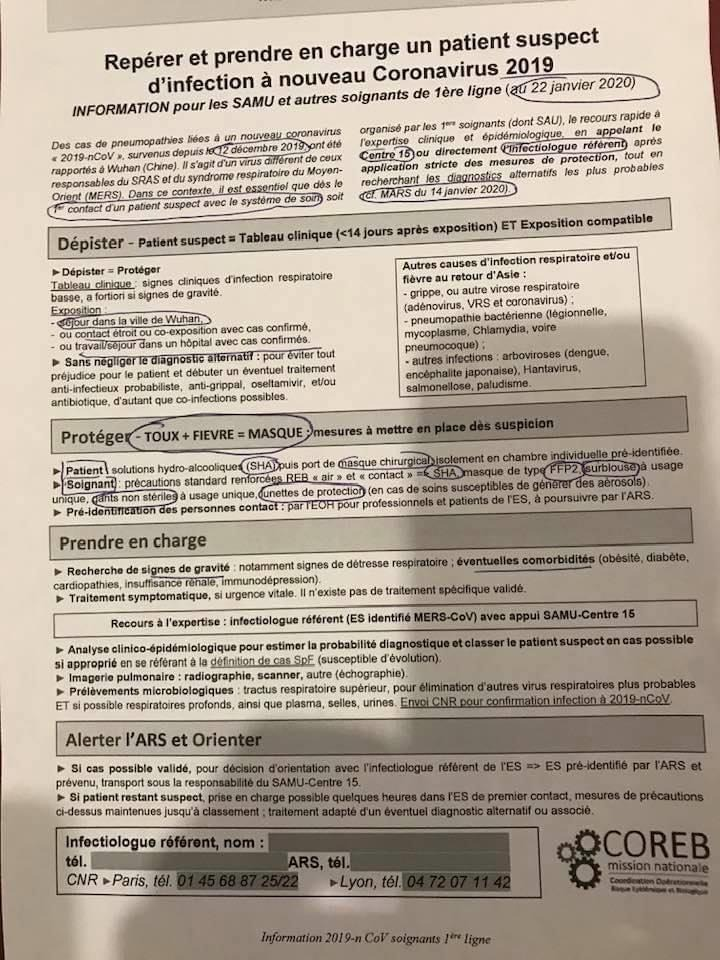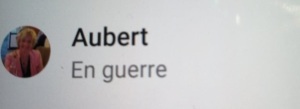Jouy-en-Josas Shelter: Quid About Covid?
The temporary accommodation center, on the former training site of Thalès, requisitioned several weeks ago by the Prefect Jean-Jacques Brot, seems to have reached cruising speed: it now accommodates a little less than twenty residents (for a capacity of 50), mostly French, as well as a Russian, a Moldavian and a British. All of this little world seeems to succeed in living together, especially with the help of the French Institute of Interpreting.
But this center, managed by the Red Cross[1]As a reminder, the Red Cross has the statutes of association and non-profit social enterprise. In the French social or socio-medical sector, it sometimes happens that the State or a local territorial community places a call for tenders and social actors, companies or associations, respond to this call by sending their offer (which service for which price?). shelters people touched (or likely to be) by the Corona virus also called Covid-19. However, if we look a little more closely, a certain number of health dysfunctions appear. The center was opened on April 3rd [2]Opening of a COVID-19 refuge in Jouy-en-Josas (Paris region), 3rd April. Available at: https://contrib.city/index.php/en/2020/04/03/opening-of-a-covid-19-refuge-in-jouy-en-josas-paris-region/ but the over-coats, necessary for the protection of nursing staff or working near the sick people, did not arrive until April 13th at the earliest. The charlottes, that is to say the light headdresses which make it possible to prevent the postilions from depositing on the hair, had not yet arrived on Friday 17th of this month. No eye protection (the virus in particular passes through the mucous membranes) nor any over-shoeing has not been mentioned for the moment. However, according to the testimony of a local medical doctor, the dress of all personnel entering the room of a person affected by Codid-19 must be that of a surgery room.

Admittedly, according to the Jouy-en-Josas town hall, the rooms and corridors are disinfected four times a day with a virucide[3]Contrib’City could not verify in situ this information.. Certainly, the installation of this type of accommodation is necessary and the foreign residents expressed their astonishment at having been so well received. But beyond that, health action still presents, as elsewhere in France, a worrying amateurism[4]CAVELIER Lucien, Chronology of a crisis: facts against state lies (Chronologie d’une crise : des faits contre des mensonges d’État), April 6th 2020. [Consulted on April 22nd, 2020]. Available at: https://medium.com/@CavelierLucien/chronologie-dune-crise-des-faits-contre-des-mensonges-d-%C3%A9tat-cb2291782acb in terms of prevention, especially for an establishment requisitioned by the Préfecture, therefore by the State. Is it because of this lack of rigor that Angela Merkel’s Germany, with a population almost 25% higher than that of France[5]At the end of 2019, Germany has 83.2 million inhabitants and France 67. Cf: POPULATION DATA, Atlas des populations et pays du monde (Atlas of populations and countries of the world), 2019, [read on April 21st, 2020]. Available at: https://www.populationdata.net/continents/europe/, recorded “only” 4,404 deaths compared to the 20,265 in our country[6]EFICIENS, Coronavirus statistics, April 20, 2020 at 7:29 p.m., [read on April 21st, 2020]. Available at: https://www.eficiens.com/coronavirus-statistiques/#evolution-contamination-france, that is to say almost five times less?
Since, as one of his speeches puts it, the Head of French State, Emmanuel Macron, and on a more local scale, the Yvelines département vice-president, Marie-Hélène Aubert, have declared that we are “at war”, it would seem that we have significantly more losses than our German neighbor. It may be time to learn the lesson of this epidemic and greatly improve our medical resilience, not to mention the economic dimension, in the face of natural disasters[7]Epidemics are also part of natural disasters, a microbe being a living element affecting the settlement of one or more given territories. According to P. George and F. Verger, […] epidemics can be considered in some respects as natural disasters. Cf: GEORGE Pierre, VERGER Fernand, Dictionnaire de géographie (Dictionary of geography), 8th ed, Paris, PUF, 2004, p 63. The geographers P. Baud, S. Bourgeat and C. Bras also confirm this classification: in the sub-chapter Other natural risks, they clearly state that the risks linked to any form of animal or viral life are also among the major [natural] risks. Cf: BAUD Pascal, BOURGEAT Serge and BRAS Catherine, Dictionnaire de géographie, Paris, Hatier, 2003, p 368.

But for that, perhaps it would be wise to think about the organization of our peri-urban fabrics in the medium or long term, based on the analyzes of researchers. Geographers P. Baud, S. Bourgeat and C. Bras, already in 2003, warned us clearly: the major risks correspond essentially to potentially catastrophic phenomena which can lead to thousands of victims. Their forecast is therefore essential. This is based on fundamental research and on foresight, that is to say the scenario hypotheses that can be envisaged[8]Cf : idem, p 361. In the medical field, beyond the current controversy over his drug against the Covid-19 virus, hydroxychloroquine, Professor Didier Raoult also informed national elected officials, in 2003, about the risks in terms of bioterrorism and epidemic. He recommended, for example, to prepare an isolation circuit going from airports and train stations to one of the 3 identified centers (Paris, Lyon, Marseille) under conditions making it possible to avoid the diffusion of microorganisms, thanks to the assistance from specialized ambulances […]. He also recommended developing the use of masks for caregivers and patients with severe pneumonia[9]RAOULT Didier, Rapport de mission (Mission Report), 2003, p 53 – 54, [read on 21st April 2020]. Available at: https://medecine.univ-amu.fr/sites/medecine.univ-amu.fr/files/mission_bioterrorisme_raoult.pdf. He had warned of France’s unpreparedness in the event of an epidemic hazard.
Thus, it is necessary to take into account the points of view of these researchers.
Perhaps we should then no longer look only at the temporal scale of political mandates (5 or 6 years) but on that of the progression of our territories (built or not) and the relationships that the inhabitants develop between them (commuting/traveling; sedentarization/nomadization; hyper-densification/spliting up; centralization/regional balancing). This would benefit the whole population, from the elders to the children, that is to say the future of life.
(Cover photo, April 15th, 2020: entrance to the temporary accommodation center on the former Thalès training site, Jouy-en-Josas (Yvelines département, Paris Region). Distribution of products by volunteers (around twenty in all) to residents. In the car park, you can see on the left an animator and more in the background, a boarder. The animator has a simple mask (can she change it every four hours?). As of April 13th, in the best of cases, no personnel had protective clothing , even after ten days of opening).
[scu name="map"]
Références

